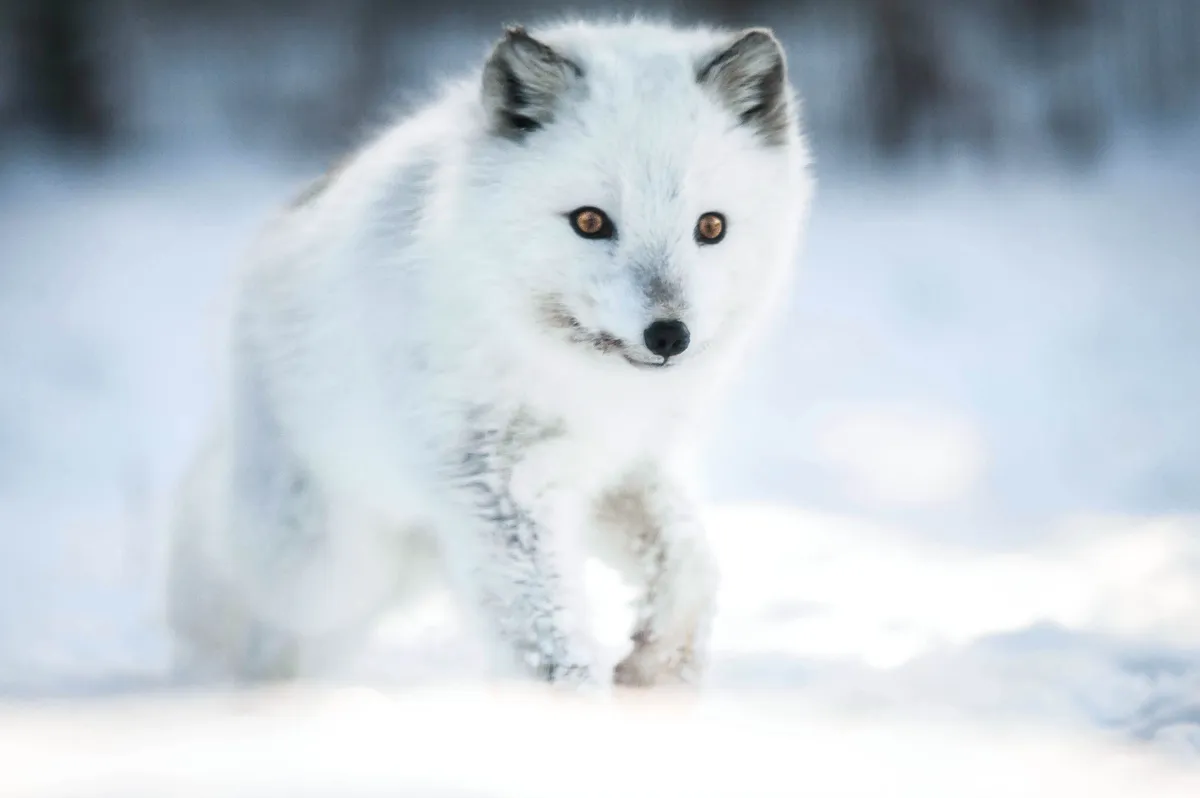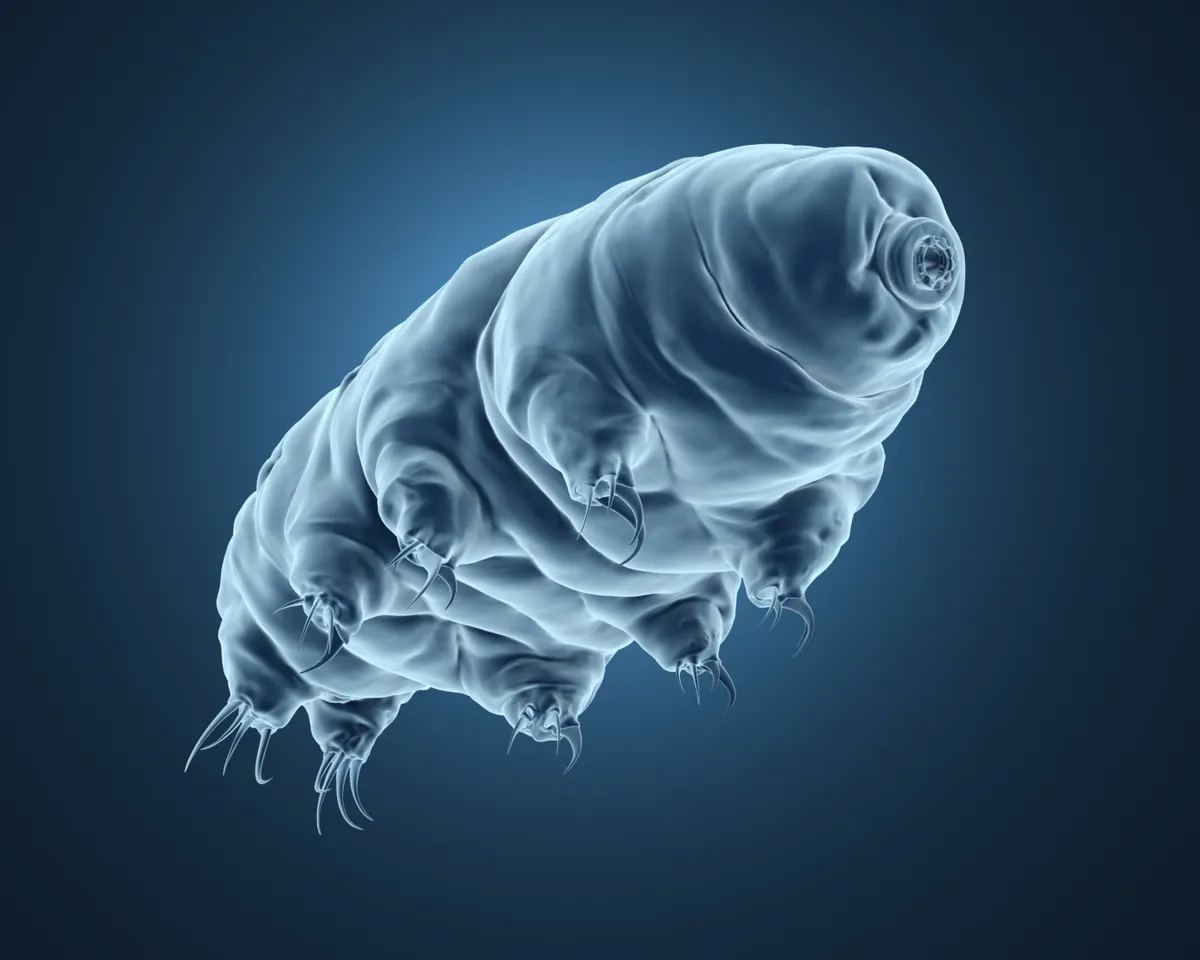Natural selection has allowed animals to be well suited to a vast range of different environments, to the point where almost everywhere you go, from the hottest desert to the deepest ocean, animal life can be found.
- The world’s ultimate survivors: Meet 8 indestructible animals that can withstand everything from fire to nuclear blasts.
- A fish that's bad at swimming, a bird that doesn't know its own chicks: These are evolution's greatest fails
Some animals, however, take it to the extreme. On Earth there are some places in which conditions are so harsh that you would expect nothing could survive, and yet some very hardy creatures manage to. These masters of the extreme possess remarkable adaptations that allow them to not just survive, but to thrive where most others would quickly perish.
Read on to find out more about animals that can survive being frozen, boiled, brined and desiccated, and the extraordinary quirks of biology that allow them to do so.
Extreme cold - Arctic fox

With its suite of clever adaptations, the Arctic fox is a master of its extreme environment. Its dense, multilayered coat of fur, combined with a compact body shape, and furry, insulated paws, allow it to survive and thrive at temperatures as low as -70 degrees celsius.
- All you need to know about the beautiful Arctic fox - including how it survives the harsh Arctic conditions
- Incredible grace and power of leaping Arctic fox hunting for prey revealed in beautiful slow-motion video
It also possesses an advantageous genetic make-up that allows it to overcome the coldest of temperatures, including useful genes involved in fat storage and metabolism. As well as physiological and genetic adaptations, Arctic foxes are also very well adapted behaviourally, for example, burrowing into the snow to create insulated dens to shelter in, and using their bushy tail as a blanket whilst they sleep.
Extreme cold - wood frog
Another creature that can survive an extreme chill is the wood frog. Rather than insulating themselves, these undistinguished-looking amphibians have the remarkable ability to survive actually being frozen.
Those of this species that live in the interior of Alaska may be exposed to temperatures as frigid as -60 degrees celsius, and they adapt to this by spending the winter in frozen animation. Quite literally – up to 70% of its total body water may freeze solid, and when frozen, wood frogs have no detectable heartbeat, breathing, blood circulation, muscle movement or brain activity.
Wood frogs may spend over 200 consecutive days of the year in this suspended state. How can they survive this? The answer lies in a clever biological trick of flushing large amounts of glucose into their cells prior to hibernation. This acts as an anti-freeze, meaning that whilst ice can form around the outsides of cells and organs, it will not form inside the cells itself, thus avoiding the lethal damage that would be suffered by most animals if turned to ice.
Extreme heat - Pompeii worms

Used as they are to boiling temperatures, the aptly named Pompeii worms, can be found living in what to most would be the most inhospitable of environments.
These deep-sea worms only live around hydrothermal vents - cracks in the sea bed from which super-heated water spews out. These vents are most commonly found in volcanically active places and where tectonic plates are moving apart. Attaching themselves to these so-called ‘black smokers’, the tail ends of these worms may rest in temperatures as high as 80 degrees celsius, whilst their heads stick out into the much cooler surrounding waters.
This makes them one of the most heat-tolerant animals on the planet. It is still a mystery quite how they manage to endure such conditions, but scientists suspect it has something to do with the fleece-like layer of symbiotic bacteria that coats their bodies and may provide some degree of protective insulation.
Extreme chemical environments - Riftia pachyptila (giant tube worm)
Like Pompeii worms, these giant tube worms thrive around the extremes of deep-sea hydrothermal vents. They live in towering colonies around the vents and are exposed to extremes of both temperature and chemicals.
The water that spews out of these vents is highly concentrated in toxic chemicals such as hydrogen sulphide - in levels that would be fatal to most animals, but not the hardy Riftia pachyptila. In fact, these incredible worms depend on the would-be toxin for their survival.
Having no mouth, anus or digestive tract, they do not eat but instead get their energy via a symbiosis with a bacteria that lives inside it. These bacteria are chemotrophic, using hydrogen sulfide from the vents, and oxygen and carbon dioxide from the seawater to create organic molecules, which the worms then use as food.
Extreme salinity - brine shrimp

Did you ever keep sea monkeys as a child? Well, these tiny creatures are also known as brine shrimp, and are amongst the most resilient animals on Earth. These little crustaceans are found worldwide, but particularly in places of extreme salinity, such as inland saltwater lakes and salt pans.
Such environments would be deadly to most animals, causing intense and rapid dehydration. Brine shrimp are however able to tolerate water that is as much as 25% saline, which is about ten times saltier than the sea. Their ability to live in such an inhospitable environment means that they manage to avoid almost all predators.
Extreme altitude - yellow-rumped leaf-eared mouse

These little rodents hold the extraordinary record of being discovered at the highest altitude a mammal has ever been found - the 6,739m summit of Volcán Llullaillaco on the border of Argentina and Chile.
- What’s the highest-living mammal?
- What are the differences between rats and mice – and how do you tell them apart?
The discovery of this mouse at such an altitude even made scientists question what was previously thought about the limits of mammal tolerance to extremes. With high altitude comes low temperatures and a lack of oxygen, but leaf-eared mice are able to withstand these challenges remarkably well.
This is partly due to some useful adaptations, including a special type of fat called brown adipose tissue, and a heat-generating process called non-shivering thermogenesis.
Extreme pressure - deep-sea cusk eels

As the deepest living known fish, residing at as far down as 8,370m, the cusk eel experiences many extremes - the cold, dark and, most pressingly, extreme pressure. Due to the great weight of the water above, the pressure this far down is crushing, and inhospitable to many animals.
- Why don’t deep-sea animals implode? Here's how they survive extreme pressures at the bottom of the ocean
- Why is the blobfish so ugly?
A cusk eel specimen was trawled from the Puerto Rico trench, the very deepest part of the Atlantic Ocean, where the pressure can exceed 8 tonnes per square inch. For most fish this pressure would destabilise the proteins in their bodies, but cusk eels (and other deep-sea fish) counteract this by accumulating a protective chemical called Trimethylamine N-oxide (TMAO) in their tissues.
Extreme depth - Halicephalobus mephisto
This next animal also has to withstand crushing pressure, not from water but instead from earth and rock. Halicephalobus mephisto is a tiny species of worm that has been found living in a very unexpected place, deep under the earth’s surface, in ore extracted from gold mines of more than 2 miles deep. Prior to this discovery, no other multicellular organism had ever been found further than 1.2 miles under the Earth’s surface. Fittingly their species name is derived from Mephistopheles, the Lord of the Underworld in a story by Faust. At such depths, levels of oxygen are very low, it can get very hot, and of course there are no other animals for them to eat. Instead they feed on subterranean bacteria.
Extreme dryness - Australian water-holding frog
A lack of available water can make some environments very hard for animals to exist in. But a few animals have evolved some truly remarkable adaptations to combat extreme dryness. This amazing amphibian, for example, survives the extreme aridity of its home in the Australian outback by entering into a state of hibernation-like dormancy during the hottest and driest summer months.
It burrows deep into clay soils to find a slightly cooler and damper place to hideout during the summer, then it does something extraordinary. It sheds several layers of its own skin to line the burrow to make it into a water-tight cocoon. It then can exist in this bubble for up to five years, living off water that it has already stored in its bladder and in pockets in its skin.
They are able to store more than half their body weight in water in this way. The frog will then be later awakened from its stupor when rainfall eventually returns.
- How long can animals survive without water? While humans can only manage a day in a desert there's one toughie that can last decades
- What’s the hottest place on Earth? And where's the biggest desert
Extreme everything - tardigrades

It would be hard to talk about extremely tough animals without mentioning tardigrades. These microscopic animals are practically indestructible.
Sometimes known as ‘water-bears’ (though their resemblance to bears is perhaps hard to see, especially with them having eight legs!) tardigrades can be found in a huge variety of environments - from the deep sea to mountaintops and sand dunes. They are masters of the extreme, withstanding freezing cold, blistering heat, very high and low pressures, dehydration, radiation, starvation… you name it. They can even go up to 30 years without food and water. They are in fact so resilient that they have even been exposed to the vacuum of outer space and survived the experience.
Their hardiness is down to a combination of different adaptations, including a unique ‘damage suppressor’ protein in their bodies that shields them from the effects of radiation, and an ability to go into a state of cryptobiosis, a deep sleep until conditions become more favourable.
- Meet the ocean quahog, a strange creature that can live to 500 years old
- It hasn’t had sex in 80 million years and extracts DNA from what it eats – meet this indestructible ‘Frankenstein’ creature
- 10 desert animals that thrive in some of the world's most hostile, inhospitable places – often in extreme temperatures
